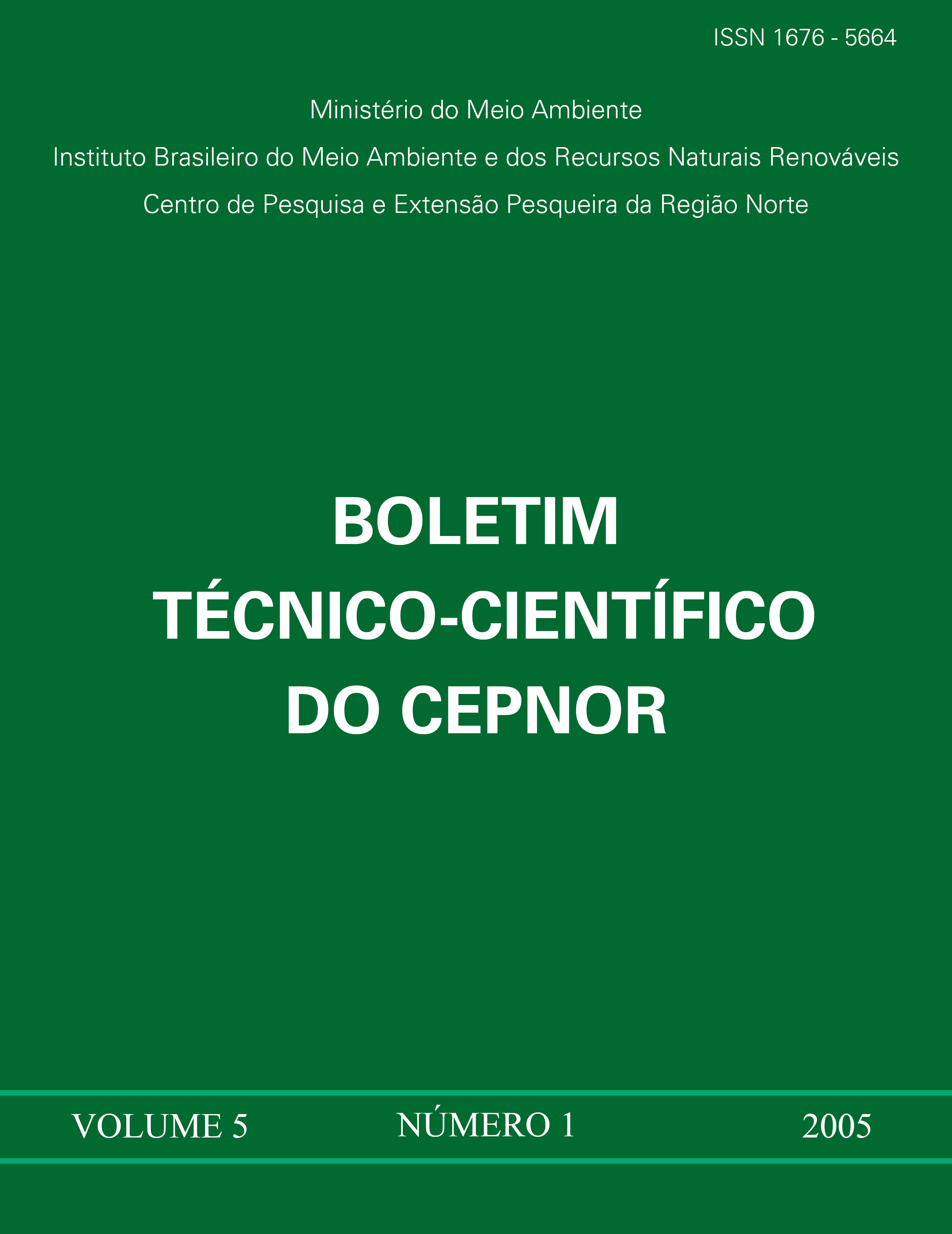1254 Morfometria Do Tralhoto, Anableps anableps (Linnaeus, 1758), Do Estuário De Caratateua – Curuçá - Pará
Palavras-chave:
largescale foureyes, Anableps anableps, Pará StateResumo
The largescale foureyes, Anableps anableps (Linnaeus, 1758), is a pelagic fish
that lives in estuarine and freshwaters of equatorial regions of the American
continent. It is endowed with a retina split into two halves that allows a fish to use
both aerial and aquatic visions at the same time, is viviparous and gregarious. In
the period from March, 2004 to February, 2005 a total of 145 individuals were
sampled at Caratateua estuary, Curuçá, Pará State, for which central tendency
measures were estimated and the regression model fitted to a number of weight/
length relationships. Values for the overall range total length (TL) and overall range
total weight (TW), respectively, were: females = 5.0 – 24.0 cm TL; 1.43 – 146.10
g TW; machos = 8.0 – 20.0 cm TL; 4.78 – 70.3 g TW. The frequency of embryos
over pregnant females’ length distribution indicated a modal class at 19 cm TL. All
weight/length regression equations showed a positive correlation with a high degree
of statistical significance. No statistical differences were found to occur between
the slopes of the following relationships: 1- female x male; 2 – young female x
young male; 3 – young male x adult male; 4 – adult female x adult male, implying
the need for estimation of new equations with joint data. High statistically significant
differences were observed between slopes of the relationships young x adult and
young female x adult female.





